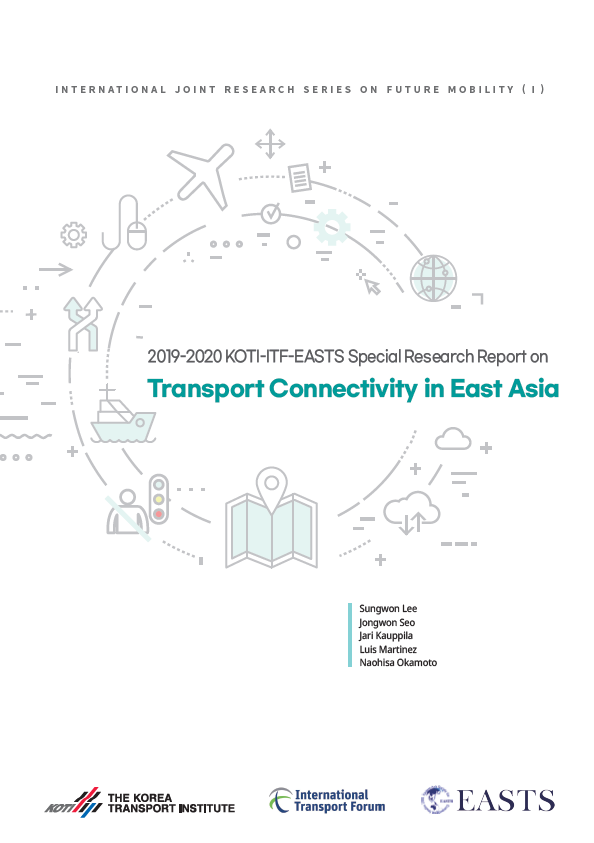Etc Report

RESEARCH
KOTI - Korea Transport institute- Date
September30 2020
- Page(s)
184 page(s)

The economy of Asia has been growing rapidly, resulting in considerable influence on the global economy and international trade. Countries in Asia have been implementing policies that aim for regional economic integration through large-scale investments in transport infrastructure to better connect the transport network and stimulate transport of international freight. Recently, there have been high expectations for connecting the land transport network on the Korean Peninsula, which remains as a major impediment to East Asian land transport.
These high expectations include the potential for these new connections to catalyze post-COVID-19 recovery, develop international trade in Eurasia, and promote peace and economic development in East Asia. It is necessary to quantitatively measure the impacts of improved transport network connections, which is essential in supporting the policy decision-making process regarding transport infrastructure investments.
The Korea Transport Institute (KOTI) conducted joint research with the International Transport Forum (ITF) and Eastern Asia Society of Transport Studies (EASTS) to form a common understanding of transport connectivity in Northeast Asia, especially on the Korean Peninsula. ITF analyzed the expected impact of improved transport connectivity on the regional economy based on a freight demand model. EASTS analyzed the connectivity of different modes and provided case studies of cities in Northeast Asia. The results of the research are combined in this report. It is hoped that this report can be used to set the future direction for investment in international transport network connections and policies for enhancing connectivity in Northeast Asia.
Acknowledgement ii
Executive Summary iii
Part 1 Introduction and Overview 1
1.1. Introduction 5
1.2. Analysis of Current State and Future Plan for Transport 9Infrastructure in Northeast Asia 9
1.3. Eurasia Transport Network Connectivity: Plans and Regional Network Analysis 45
Part 2 Impact Analysis of Improving Transport Connectivity 69in the Northeast Asia Region 69
2.1. Introduction 73
2.2. Review: Korean Peninsula Trade and Transport Connectivity 76
2.3. Review: Existing Overland Trade Routes in Asia and Russia 78
2.4. Scenario Building and Modelling 80
2.5. Scenario Analysis Results: Border Normalization 87
2.6. Conclusion 100
Part 3 Transport Connectivity-Theory and Implementation 103
3.1. Introduction 107
3.2. Analysis of Socioeconomic Impact of Connecting Transport Network in Northeast Asia 110
3.3. Analysis of Public Transport Connectivity 128
3.4. Analysis of Rail Transport Network Connectivity 142